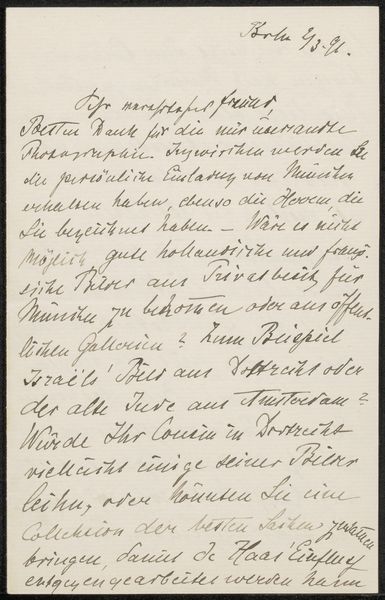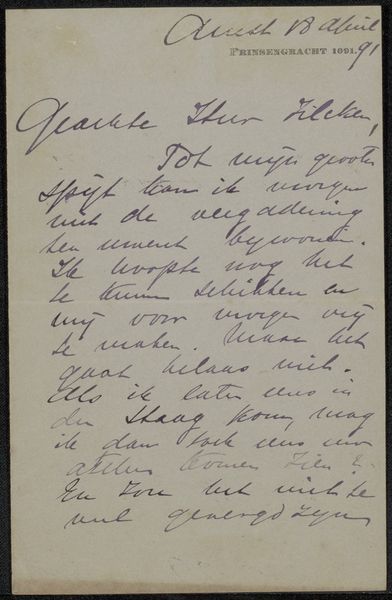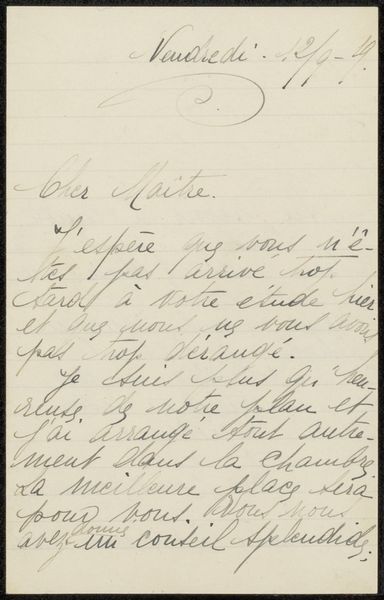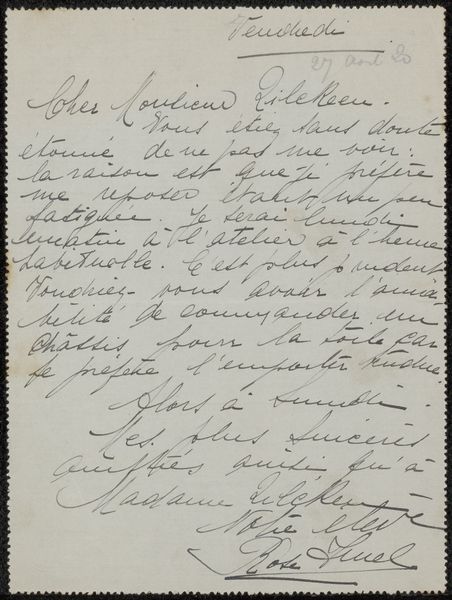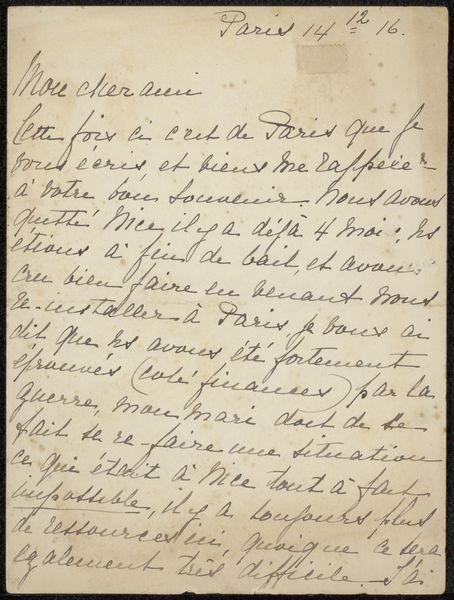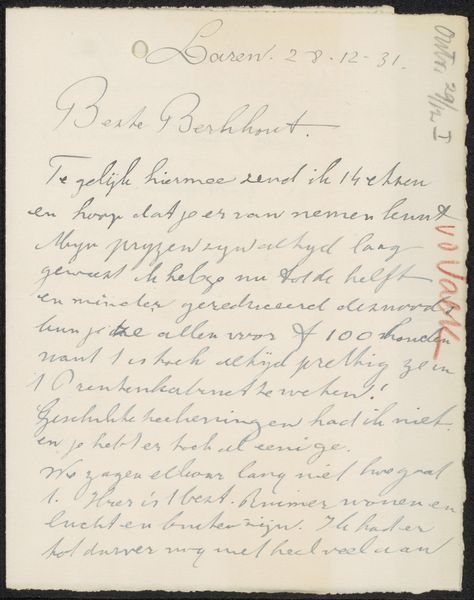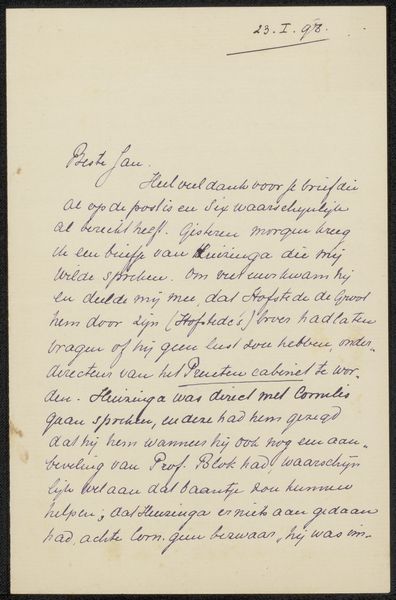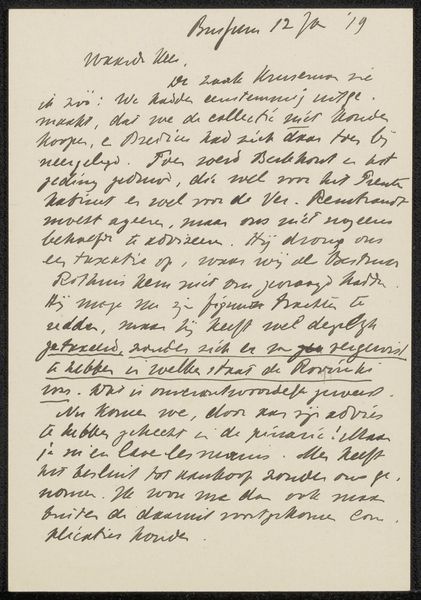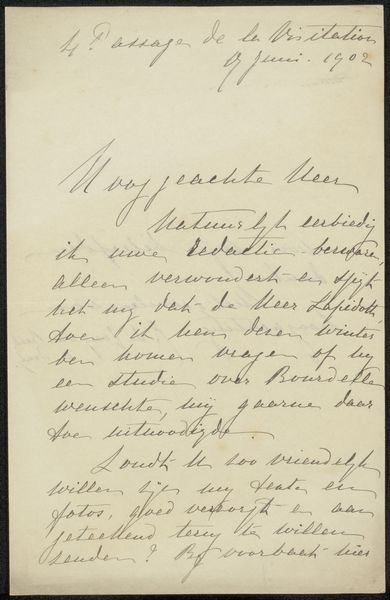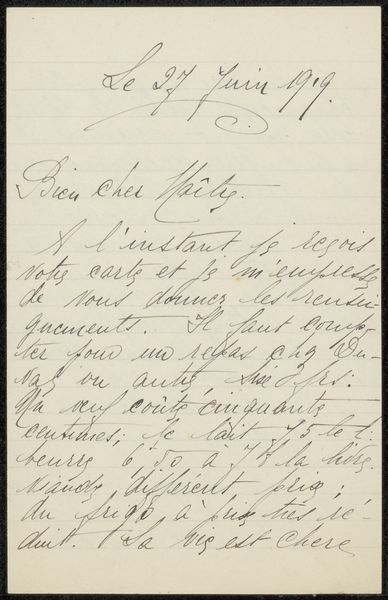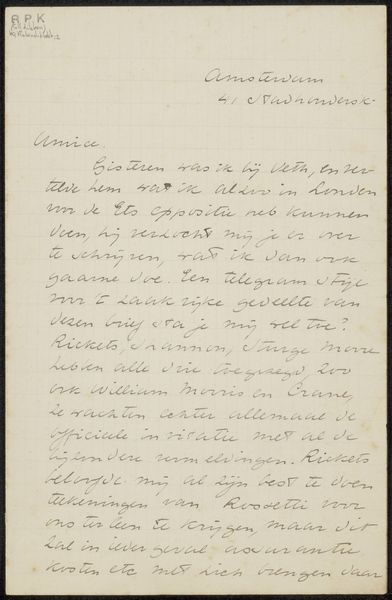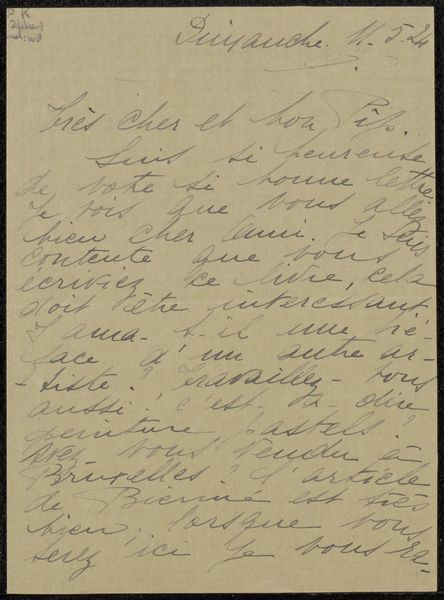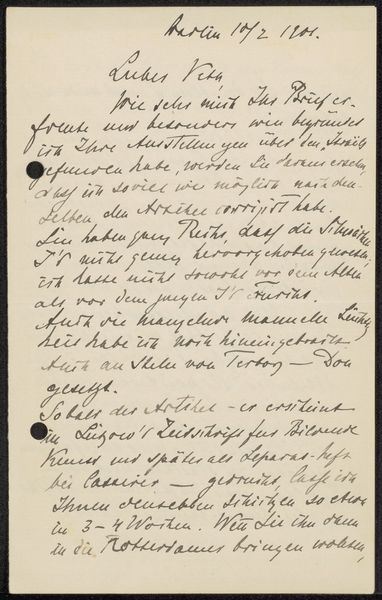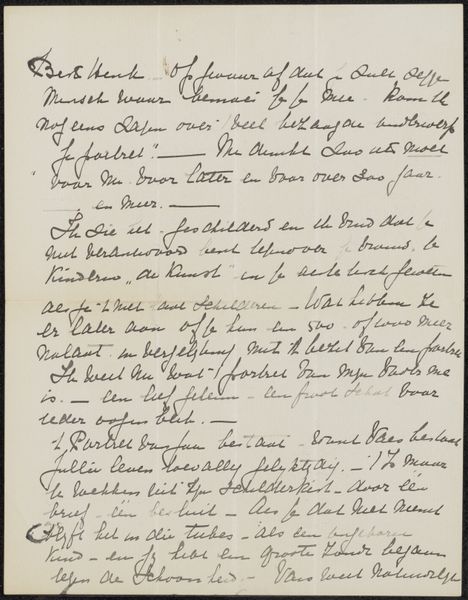
drawing, paper, ink, pen
#
drawing
#
hand written
#
script typography
#
hand-lettering
#
old engraving style
#
hand drawn type
#
hand lettering
#
paper
#
ink
#
hand-drawn typeface
#
intimism
#
pen-ink sketch
#
pen work
#
pen
#
coloring book page
#
calligraphy
Copyright: Rijks Museum: Open Domain
Editor: Here we have "Brief aan Philip Zilcken," a letter created sometime between 1911 and 1930, rendered in ink and pen on paper. The handwriting gives it such a personal feel. It’s like a little window into a private exchange. What do you see in this piece? Curator: This piece presents a fascinating glimpse into the artistic networks of the early 20th century. Beyond the intimacy suggested by the handwriting, I’m drawn to the context: correspondence. How were artistic ideas circulated? Who had access to these networks? The act of physically writing a letter, before emails and texts, meant a very different kind of relationship. Editor: That's true; the materiality definitely shapes the message. It makes me wonder about Zilcken himself and his relationship with the sender. Was he a patron? A fellow artist? Curator: Exactly. Understanding Zilcken's role is crucial. These exchanges often reflect power dynamics within the art world. Letters like this weren't just personal; they contributed to the construction of artistic reputations and movements. Who decided what was valuable and worth preserving, and why? It may speak volumes. Editor: So, by looking at a seemingly simple letter, we can start to unpack larger socio-political structures within the art world? Curator: Precisely. The public role of art and the politics of imagery are often hidden in these smaller, seemingly insignificant exchanges. Editor: I never thought of it that way. I'm so used to seeing art as finished objects, not processes embedded in larger social contexts. Curator: And that's the point! History invites us to look behind the object and to focus instead on all of the socio-cultural and political processes at play. What do we know about the accessibility of materials such as pen and ink during this period? Editor: This conversation has completely shifted my perspective. I'm definitely going to pay closer attention to these behind-the-scenes aspects in my future research. Curator: Excellent. It's about seeing the art world as a complex web of relationships and understanding the forces that shape it.
Comments
No comments
Be the first to comment and join the conversation on the ultimate creative platform.
